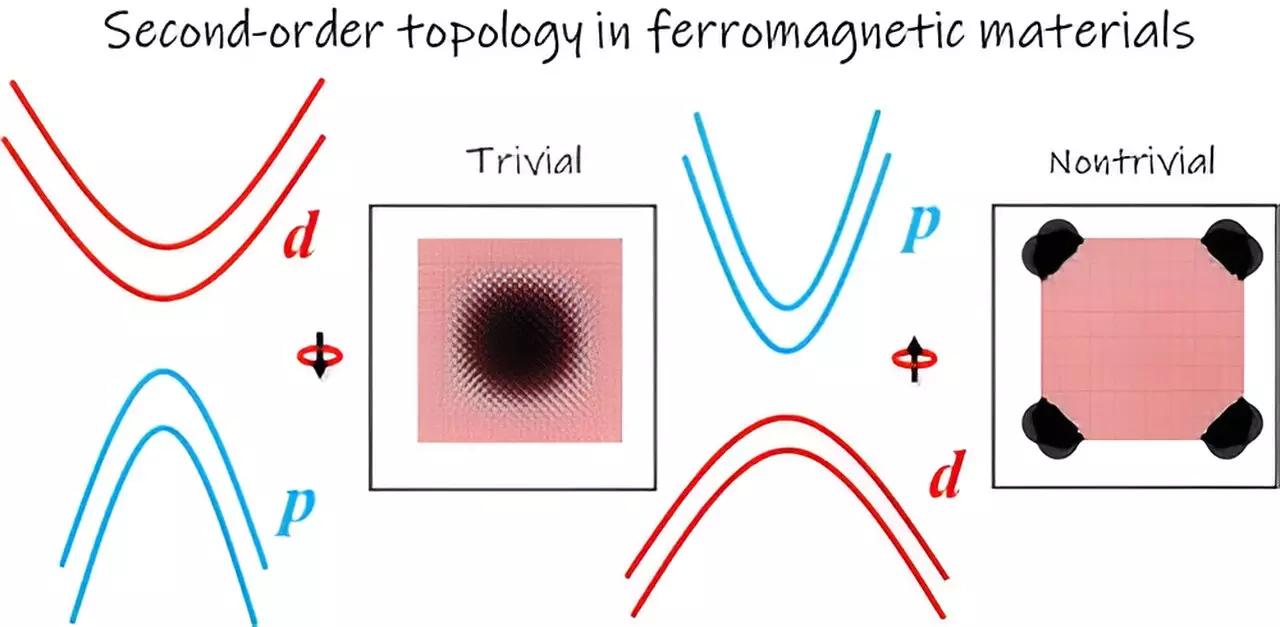The study of intrinsic magnetic second-order topological insulators represents a significant leap in the quest for innovative materials applicable to spintronics—a burgeoning field focused on utilizing electron spin, in addition to charge, to process information. Researchers at Monash University, aligned with the FLEET Center, have made groundbreaking strides in this area by unveiling a versatile method of analyzing these materials. Their findings, published in the reputable journal Nano Letters, underscore the importance of materials such as CrI3, Cr2Ge2Te6, and VI3, which have garnered substantial attention in recent years due to their potential ramifications on technological advancements.
Topological insulators are distinguished by their unique electronic structure, whereby their interior acts as an insulator while their surface can facilitate robust electron conduction. This contrasts sharply with traditional insulating materials, where the behavior extends uniformly throughout. Three-dimensional topological insulators like Bi2Se3 embody this characteristic, hosting two-dimensional Dirac fermions on their surfaces. However, the introduction of second-order topological insulators shakes up conventional paradigms; this novel concept features (m-2)-dimensional boundary states present in m-dimensional materials. In simpler terms, one can encounter one-dimensional hinge states in three-dimensional materials or zero-dimensional corner states in two-dimensional analogs.
A cornerstone of this research revolves around intrinsic ferromagnetic semiconductors—typically characterized by strong electron-electron correlations. These correlations can be so dominant that they inhibit electron communication between neighboring atoms, forming a quasi-atomic insulator state devoid of necessary topological properties. Bridging the gap between the insulating behavior and the desired topological qualities presented formidable challenges for researchers. Understanding and manipulating the interplay between the electronic structures of ferromagnetic materials is crucial in advancing this field.
Guided by Dr. Zhao Liu and Professor Nikhil Medhekar of FLEET THEME 1, the research identified a promising pathway whereby the p orbitals from ligand anions and d orbitals from metal cations can flip their traditional energy order within certain intrinsic ferromagnetic semiconductors. This inverted orbital order represents a departure from classical expectations, where p orbitals typically exist at lower energy levels than d orbitals.
When existing in a higher energy state, the p orbitals take on a new role. The research posits that while traditional ordered p-d orbitals generate trivial topological phases, this newly inverted configuration is capable of producing nontrivial topological characteristics. Such a scenario suggests that the arrangement of electrons not only affects the physical properties of the material but also offers potential pathways to engineer novel topological states.
The researchers utilized advanced density-functional theory calculations coupled with wave function symmetry analysis to identify potential candidates for intrinsic magnetic second-order topological insulators. Among these, 1T-VS2 and CrAs monolayers emerged as leading candidates. The structural characteristics of these materials are significant; for instance, 1T-VS2 possesses a hexagonal lattice while CrAs features a square lattice. In both cases, the spin-up channel exhibits the inverted p-d orbital configuration, a hallmark of nontrivial topology, whereas the spin-down channel conforms to traditional p-d orbital ordering and trivial topology.
Another notable aspect of this research is the proposed experimental verification methods. By employing spin-polarized scanning tunneling microscopy, researchers can detect localized corner states in materials shaped into hexagonal or triangular configurations for 1T-VS2 or squares for CrAs. This innovative approach to validating theoretical predictions emphasizes the potential for practical applications in developing spintronic devices.
The implications of this research extend beyond the immediate findings regarding topological semiconductors. Professor Medhekar noted that the principles discovered could be extrapolated to Kondo insulators, where electron behavior mirrors the p and d interactions explored in this study. The notion of discovering second-order topological Kondo insulators promises to open new frontiers in material science and condensed matter physics.
The exploration of intrinsic magnetic second-order topological insulators initiates a new chapter in the spintronics landscape. This research not only paves the way for future discoveries in this evolving field but also lays the groundwork for the development of advanced electronic materials with unprecedented capabilities. With continued exploration and collaboration, the future of topological insulators looks increasingly promising.

